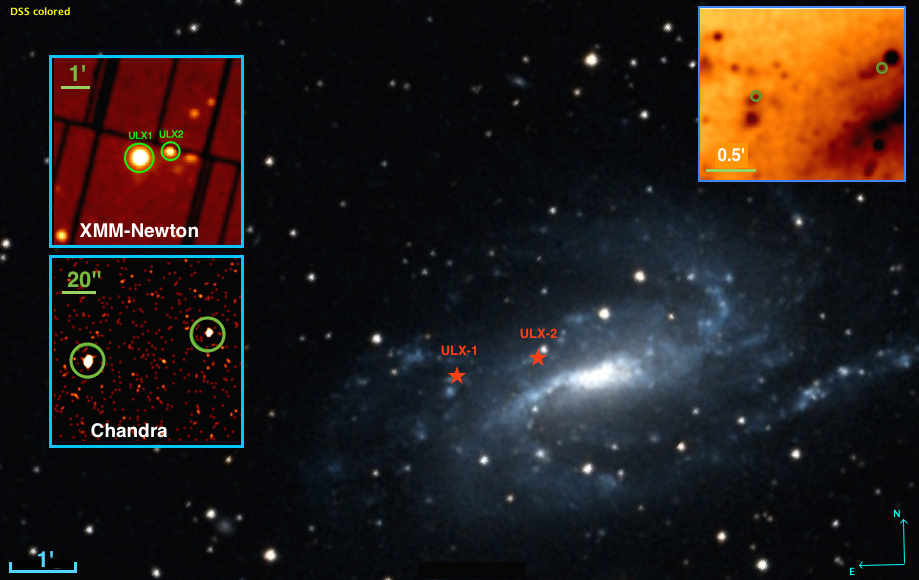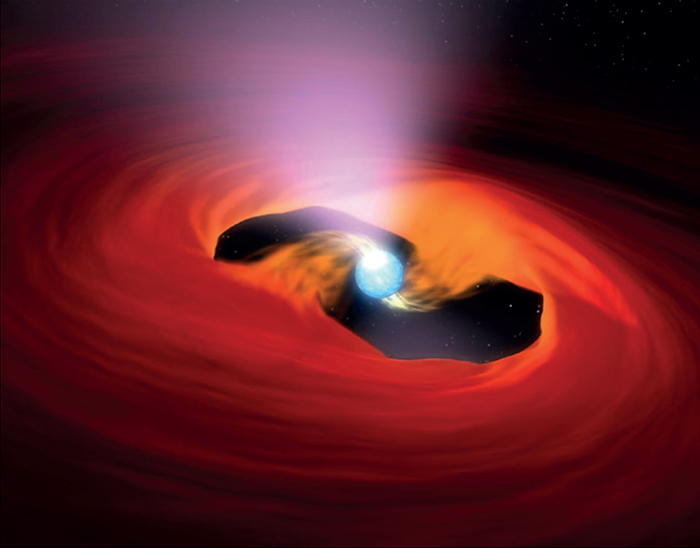Ultraluminous X-ray sources (ULXs) are a class of extra-galactic objects with X-ray luminosities significantly higher than 10^39 erg/s (in some cases up to 10^42 erg/s), hence well above the Eddington limit for a 10 solar masses black hole. Their X-ray emission is produced by the matter accretion onto compact objects, which are likely in binary systems. ULXs are though as a manifold population of either intermediate mass black holes, or stellar mass black holes and neutron stars, where for the latter the accretion rates are clearly extremely super-Eddington. Recently, some ULX pulsar were discovered, with periods of 0.5s – 30s.

The data of the satellites XMM-Newton and NuSTAR allowed us to characterize the spectral properties of the ULXs in the energy band ~0.2-30 keV. In the ULX spectra it was found the quasi-systematic presence of a soft, thermal component (with a temperature of ~0.3-0.5 keV), of a comptonization component modelled by an optically thick corona with electron temperature of ~3-7 keV (e.g. Pintore et al. 2013. In some sources, it was observed also an additional hard powerlaw. Such components can be associated to the photosphere of optically thick wind ejected from the accretion disc (as expected in the case of super-Eddington accretion), from the inner regions of the accretion disc (modified by advection effects) and, in the case of the ULX pulsars, by a region consistent with the accretion column (e.g. Israel et al. 2018). The spectral analysis allowed us to hypothesize that many ULXs can actually host neutron stars rather than black holes (Pintore et al. 2017).
The analysis of proprietary and archival data of the XMM-Newton satellite revealed of crucial importance in the discovery of pulsars in the ULXs. Because of the large spin-up observed in these sources, it has been necessary to develop specific timing techniques, which permitted to discovery the first, and brightest (Lx~10^41 erg/s), ULX pulsar (Israel et al. 2017). In addition to this, our group has strongly collaborated in the discovery of 4 ULX pulsars on a total of 5 sources known up to now. The mechanisms ruling the accretion onto the neutron stars in such sources are not yet completely understood, but our group proposed that the neutron stars in ULXs may present a combination of dipolar and quadrupolar magnetic fields of the order 10^14-10^15 G.

In general, ULXs have been long-thought as persistent sources, i.e. with small luminosity variations. Actually, this strongly depends on observational bias. Indeed, thanks to regular Swift-XRT monitorings (and in some cases thanks to Chandra and XMM-Newton observations) of nearby galaxies, it was possible to discover serendipitously a number of ULX transients. Our group focussed on some of them, investigating the spectral and temporal evolution along their outbursts (Esposito et al. 2012, Pintore et al. 2018).
In addition, thanks to a deep Chandra observation of the source NGC 5907 ULX-1, we found the first X-ray diffuse emission around a ULX, whom dimension should be of ~150 pc. The nature of such a diffuse emission may be associated to existence of material ejected from the ULX which interacts with the local interstellar medium (Belfiore et al. 2019).
